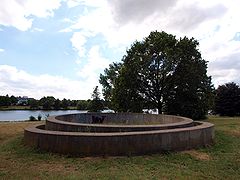Donald Judd
Donald Clarence Judd was an American artist associated with minimalism . In his work, Judd sought autonomy and clarity for the constructed object and the space created by it, ultimately achieving a rigorously democratic presentation without compositional hierarchy. It created an outpouring of seemingly effervescent works that defied the term minimalism. Nevertheless, he is generally considered the leading international exponent of minimalism, and its most important theoretician through such seminal writings as Specific Objects .
Judd was born in Excelsior Springs, Missouri. He served in the Army from 1946 to 1947 as an engineer and in 1948 began his studies in philosophy at the College of William and Mary, later transferring to Columbia University School of General Studies. At Columbia, he earned a degree in philosophy and worked towards a masters in art history under Rudolf Wittkower and Meyer Schapiro. At this time he also attended night classes at the Art Students League of New York. He supported himself by writing art criticism for major American art magazines between 1959 and 1965. In 1968 Judd bought a fivestory castiron building, designed by Nicholas Whyte in 1870, at 101 Spring Street for under 70,000, serving as his New York residence and studio. Over the nextyears, Judd renovated the building floor by floor, sometimes installing works he purchased or commissioned from other artists.
Source: Wikipedia

